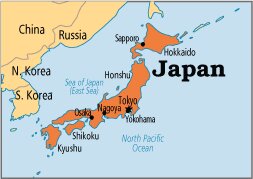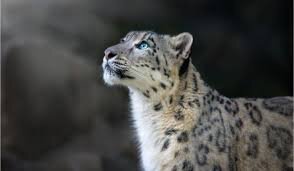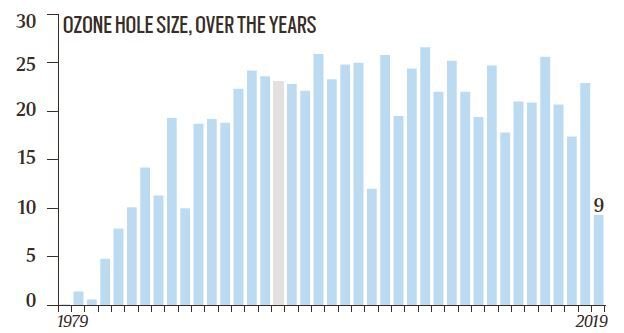International Relations
India-Japan
Recently, the President of India visited Japan. The visit was the first presidential visit to Japan after a gap of 29 years.
- The last presidential visit was in 1990 when the then President, Ramaswamy Venkatraman, attended the enthronement ceremonies of Emperor Emeritus Akihoto who stepped down in 2018.
Key Highlights
- The President attended the enthronement ceremony of the Emperor Naruhito of Japan in the Imperial Palace.
- He visited the Tsukiji Hongwanji Buddhist Temple and planted a sapling from Bodh Gaya.
- He also visited the Shinto Meiji Shrine and interacted with a delegation from the Gotemba Pagoda.
- The Shrine is dedicated to the deified spirit of Emperor Meiji . The Meiji restoration in 1868 was a watershed moment in Japanese history in which Japan was completely transformed into a modern country.
- The Peace Park in Gotemba City provides a beautiful view of Mt. Fuji (the highest mountain in Japan) and houses the chalky stupa. The stupa, the symbol of the park, keeps the Buddha’s ashes presented by late Indian Prime Minister Jawaharlal Nehru.
- He addressed the members of Indian diaspora in Tokyo and sought their support for creating a progressive and prosperous India.
- He also laid the foundation stone for Sri Sathya Sai Sanathana Samskruti Project at Sai no Sato, Kakegawa, Japan.
- Sai no Sato will be developed as a temple on the lines of Akshardham and Swaminarayan Temple to promote Indian traditional culture.
India-Japan Ties
- India and Japan share robust ties with cooperation in areas of defence, science and cooperation and trade.
- In 2014, India and Japan upgraded their relationship to 'Special Strategic and Global Partnership'.
- Mumbai-Ahmedabad High Speed Railway (MAHSR) is a very important area of cooperation between India and Japan in Railway Sector.
- A “India-Japan Digital Partnership” (I-JDP) was launched during the visit of the Prime Minister of India to Japan in October 2018, furthering existing areas of cooperation as well as new initiatives within the scope of cooperation in S&T/ICT, focusing more on “Digital ICT Technologies”.
- The India-Japan Comprehensive Economic Partnership Agreement (CEPA) that came into force in August 2011 covers trade in goods, services, movement of natural persons, investments, Intellectual Property Rights, custom procedures and other trade related issues.
- India and Japan defence forces organize a series of bilateral exercises namely, JIMEX, SHINYUU Maitri, and Dharma Guardian. Both the countries also participate in Malabar exercise with USA.
Biodiversity & Environment
First Snow Leopard Survey
The Government of India has launched the First National Protocol on Snow Leopard Population Assessment, to mark the occasion of International Snow Leopard Day (23rd October).
- The first National Snow Leopard Survey of the nation has been developed by scientific experts in association with the Snow Leopard States/UTs namely, Ladakh, Jammu & Kashmir, Himachal Pradesh, Uttarakhand, Sikkim, and Arunachal Pradesh.

- The use of technology such as camera traps and scientific surveys will help to estimate the numbers.
- The occasion also marked the inaugural session of the 4th steering committee meeting of the Global Snow Leopard & Ecosystem Protection (GSLEP) Program.
- The GSLEP is a high-level inter-governmental alliance of all the 12 snow leopard range countries.
- The snow leopard countries namely, India, Nepal, Bhutan, China, Mongolia, Russia, Pakistan, Afghanistan, Kyrgyzstan, Kazakhstan, Tajikistan, and Uzbekistan.
- It majorly focuses on the need for awareness and understanding of the value of Snow Leopard for the ecosystem.
- The GSLEP Program (2019) is being organized by the Ministry of Environment, Forest and Climate Change at New Delhi.
- Currently, the Steering Committee meeting of GSLEP chaired by Nepal and co-chaired by Kyrgyzstan.
- The GSLEP is a high-level inter-governmental alliance of all the 12 snow leopard range countries.
Snow Leopard
- The snow leopard inhabits the higher Himalayan and trans-Himalayan landscape in the five states of Jammu and Kashmir, Himachal Pradesh, Uttarakhand, Sikkim, and Arunachal Pradesh.
- This area contributes to about 5% of the global snow leopard range.
- Snow leopards are categorized as ‘Vulnerable’ by IUCN and in the Schedule I of the Indian Wildlife (Protection) Act 1972.
- They are listed in Appendix I of the Convention on International Trade in Endangered Species (CITES) and the Convention on Migratory Species (CMS), revealing the need for the highest conservation status to the species, both globally and in India.
- Other conservation efforts launched by India are:
- Project Snow Leopard (PSL) : It promotes an inclusive and participatory approach to conservation that fully involves local communities.
- SECURE Himalaya: Global Environment Facility (GEF)-United Nations Development Programme (UNDP) funded the project on conservation of high altitude biodiversity and reducing the dependency of local communities on the natural ecosystem. This project is now operational in four snow leopard range states, namely, Jammu and Kashmir, Himachal Pradesh, Uttarakhand, and Sikkim.
Biodiversity & Environment
SAFAR
- The System of Air Quality and Weather Forecasting And Research (SAFAR) is a national initiative introduced by the Ministry of Earth Sciences (MoES) to measure the air quality of a metropolitan city, by measuring the overall pollution level and the location-specific air quality of the city.
- The system is indigenously developed by the Indian Institute of Tropical Meteorology (IITM), Pune and is operationalized by the India Meteorological Department (IMD).
- It has a giant true color LED display that gives out real-time air quality index on a 24x7 basis with color-coding (along with 72 hours advance forecast).
- The ultimate objective of the project is to increase awareness among the general public regarding the air quality in their city so that appropriate mitigation measures and systematic action can be taken up.
- It organizes awareness drive by educating the public (prompting self-mitigation), and
- It also helps the policy-makers to develop mitigation strategies keeping in mind the nation’s economic development.
- SAFAR is an integral part of India’s first Air Quality Early Warning System operational in Delhi.
- It monitors all weather parameters like temperature, rainfall, humidity, wind speed, and wind direction, UV radiation, and solar radiation.
- Pollutants monitored: PM2.5, PM10, Ozone, Carbon Monoxide (CO), Nitrogen Oxides (NOx), Sulfur Dioxide (SO2), Benzene, Toluene, Xylene, and Mercury.
- The World Meteorological Organization has recognized SAFAR as a prototype activity on the basis of the high-quality control and standards maintained in its implementation.
- SAFAR system would benefit cost savings to several other sectors like agriculture, aviation, infrastructure, disaster management, tourism, etc. which directly or indirectly gets affected by air quality and weather.
Air Quality Index (AQI)
The AQI is an index for reporting daily air quality.
- It focuses on health effects one might experience within a few hours or days after breathing polluted air.
- AQI is calculated for eight major air pollutants:
- Ground-level ozone,
- PM10,
- PM2.5,
- Carbon monoxide,
- Sulfur dioxide,
- Nitrogen dioxide,
- Ammonia,
- Lead,
- Ground-level ozone and airborne particles are the two pollutants that pose the greatest threat to human health in India.
Governance
PM National Dialysis Programme
Recently, the Health Ministry issued guidelines for establishing peritoneal dialysis services under the Pradhan Mantri National Dialysis Programme.
- The guidelines are expected to benefit the 2 lakh Indians who develop end-stage kidney failure every year in India.
- There are two main types of dialysis namely- Hemodialysis, and Peritoneal dialysis.
- In peritoneal dialysis, people will have access to the treatment option that could be performed at home (as in hemodialysis, treatment needs to be performed at a designated dialysis centre).
- The peritoneal dialysis avoids the substantial costs of infrastructural set-up, maintenance, and staffing; reduces the demands placed on the healthcare system, and offers patients the autonomy to be at home. Consequently, the decision to include peritoneal dialysis under the ambit of the PM National Dialysis Programme was finalized.
- Mass-based peritoneal dialysis programmes have the potential to substantially bring down the cost of treatment.
- The move is also expected to benefit children suffering from kidney failure who need dialysis treatment because of biological and lifestyle reasons.
- Also, paediatric haemodialysis facilities are scarce in India.
- The guidelines will also serve as a comprehensive manual for states intending to set up peritoneal dialysis centers.
- This will ensure the delivery of high-quality and cost-effective services and develop a clinically-safe and effective programme.
Dialysis
- Dialysis is a treatment that does some of the things done by healthy kidneys. It is needed when one develops an end-stage kidney failure.
- Dialysis maintains balance of body by:
- Removing waste, salt and extra water to prevent them from building up in the body.
- Keeping a safe level of certain chemicals in your blood, such as potassium, sodium and bicarbonate.
- Helping to control blood pressure.
PM National Dialysis Programme
- The programme was announced by the Ministry of Health & Family Welfare in 2016 under the National Health Mission (NHM) in PPP (Public-Private Partnership) model.
- It aims to provide free dialysis services to the poor.
- The first phase of the programme envisaged setting up of hemodialysis centres in all districts of the country.
- Financing:
- For Below Poverty Line (BPL) economic group: 100% expenses are directly covered under NHM by the government.
- For non-BPL patients: They can get treated at the district hospitals by paying the same rates as paid by the government for the BPL patient.
Important Facts For Prelims
United Nations Day
Each year on 24 October, the United Nations (UN) celebrates its anniversary. UN Day marks the anniversary of the entry into force of the UN Charter and the founding of the Organization in 1945.
- The name "United Nations" was coined by United States President Franklin D. Roosevelt.
- The main organs of the UN are:
- the General Assembly,
- the Security Council,
- the Economic and Social Council,
- the Trusteeship Council,
- the International Court of Justice,
- the UN Secretariat.
- The forerunner of the United Nations was the League of Nations, an organization conceived in circumstances of the First World War, and established in 1919 under the Treaty of Versailles "to promote international cooperation and to achieve peace and security."
- It will celebrate its 75th anniversary on 24 October 2020.
Important Facts For Prelims
Mole Day
Mole Day is an unofficial holiday celebrated among chemists, chemistry students and chemistry enthusiasts on October 23, between 6:02 AM and 6:02 PM, making the date 6:02 10/23 in the US date format.
- The time and date are derived from Avogadro's number, which is approximately 6.02×10 ^ 23, defining the number of particles (atoms or molecules) in one mole of a substance, one of the seven base SI units.
- The seven base units in the SI system are:
- the kilogram (kg), for mass
- the second (s), for time
- the kelvin (K), for temperature
- the ampere (A), for electric current
- the mole (mol), for the amount of a substance
- the candela (cd), for luminous intensity
- the meter (m), for distance
- The day was created to foster an interest in chemistry.
Avogadro's Number
- The number of particles (atoms, molecules or ions) present in 1 mole of any substance is fixed, with a value of 6.022 × 1023.
- This is an experimentally obtained value. This number is called the Avogadro Constant or Avogadro Number (represented by N0), named in honour of the Italian scientist Amedeo Avogadro.
- 1 mole (of anything) = 6.022 × 1023 in number, as, 1 dozen = 12 nos.
- The Avogadro constant 6.022 × 1023 is defined as the number of atoms in exactly 12 g of carbon-12.
Important Facts For Prelims
Smallest Ozone Hole in Decades
During September and October months of 2019, the ozone hole over the Antarctic has been the smallest observed since 1982.
- The presence of abnormal weather patterns in the atmosphere over Antarctica is responsible for shrinkage of the ozone hole.
- Due to the warmer temperatures over Antarctica in 2019, fewer polar stratospheric clouds formed and they couldn’t persist longer, which limited the ozone-depletion process.
- Thus, shrinkage of the ozone hole is not a sign of a fast track recovery of atmospheric ozone but the result of the temporary warming of Antarctica.
Ozone
- Ozone (composed of three atoms of oxygen) occurs both in the Earth's upper atmosphere (stratosphere) and at ground level ( troposphere). It can be good or bad, depending on where it is found.
- Good Ozone: Ozone occurs naturally in the Earth's upper atmosphere (Stratosphere) where it forms a protective layer that shields us from the sun's harmful ultraviolet rays.
- Ozone-depleting gases like chlorofluorocarbons (CFCs), HCFCs, halons, destroy this protective shield and causes the hole in the ozone.
- India had adopted the Kigali Amendment to the Montreal Protocol (aims to phase-down hydrofluorocarbons).
- Bad Ozone: In the Earth's lower atmosphere (troposphere) near ground level, ozone is formed when pollutants emitted by cars, power plants, industrial boilers, refineries, chemical plants, and other sources react chemically in the presence of sunlight.
- Surface level Ozone is a harmful air pollutant.
Biodiversity & Environment
Antarctic Ocean Sanctuary
The Commission for the Conservation of Antarctic Marine Living Resources (CCAMLR), is considering the proposal of creating the East Antarctic marine park, in its 38th meeting starting from 21st October 2019.
- China and Russia have been key in blocking the proposal, which was first floated by Australia, France and the European Union in 2010 before being scaled down in 2017.
- Both China and Russia have fishing interests in the region.
- The proposed park, almost a million square kilometres, would protect important foraging areas and essential food sources for emperor penguins as well as seals, whales and other seabirds.
- Rampant sailing has brought some species of the ocean like seals, whales, fish, to the brink of extinction.
- Also looming are the consequences of the changing climate. The ocean is warming, acidifying and ice shelves are thinning and collapsing.
- The consent of all 26 members of the CCAMLR is required for the creation of marine park.
- CCAMLR has previously established other major ocean Antarctic sanctuaries — including the world’s largest spanning 1.55 million square kilometres in the Ross Sea.
Commission for the Conservation of Antarctic Marine Living Resources
- CCAMLR was established by international convention in 1982 with the objective of conserving Antarctic marine life.
- This was in response to increasing commercial interest in Antarctic krill resources, a keystone component of the Antarctic ecosystem and a history of over-exploitation of several other marine resources in the Southern Ocean.
- It’s Secretariat is located in Hobart, Tasmania, Australia.
Important Facts For Prelims
Massive Galaxy Found in Cosmic Dust
A massive galaxy, dating back to the early universe, has been spotted in cosmic dust clouds.
- The found galaxy has almost equal numbers of stars as the Milky Way, but it is forming new stars at 100 times the rate of the Milky Way galaxy.
- The research has been carried out with the help of Atacama Large Millimeter Array (ALMA).
- It is an international partnership of the European Southern Observatory (ESO), the U.S. National Science Foundation (NSF) and the National Institutes of Natural Sciences (NINS) of Japan, together with NRC (Canada), NSC and ASIAA (Taiwan), and KASI (Republic of Korea), in cooperation with the Republic of Chile.
- ALMA is a single telescope composed of 66 high precision antennas located on the Chajnantor plateau, northern Chile.
- Further, the James Webb Space Telescope (JWST) is expected to enhance the quality of research related to cosmic dust clouds.
- The James Webb Space Telescope (also called JWST or Webb) will be a large infrared telescope with a 6.5-meter primary mirror.
- The telescope will be launched on an Ariane 5 rocket from French Guiana in 2021.
- It will study every phase in the history of our Universe, ranging from the first luminous glows after the Big Bang, to the formation of solar systems capable of supporting life on planets like Earth, to the evolution of our own Solar System.
- Webb is an international collaboration between NASA, the European Space Agency (ESA), and the Canadian Space Agency (CSA).
Cosmic Dust
- Cosmic dust consists of tiny particles of solid material floating around in the space between the stars.
- It is more like smoke with small particles varying from collections of a few molecules to grains of 0.1 mm in size.
- It plays an important role in the formation of young stars and planets in space.
Important Facts For Prelims
BrahMos Missile
The Indian Air Force (IAF), recently, carried out successful firing of BrahMos surface-to-surface missiles from a mobile platform at Trak Island in Andaman Nicobar islands.
- IAF had previously successfully fired the land and air version of BrahMos missile.
- The BrahMos missile provides Indian Air Force a much desired capability to strike from large stand-off ranges on any target at sea or on land with pinpoint accuracy by day or night and in all weather conditions.
- The missile functions on the Fire and Forget principle with high accuracy.
- BrahMos is a 2.8 Mach state-of-art supersonic cruise missile designed and developed by the BrahMos Aerospace Private Limited (BAPL).
- BAPL was formed as a joint venture between the companies of India and Russia.





